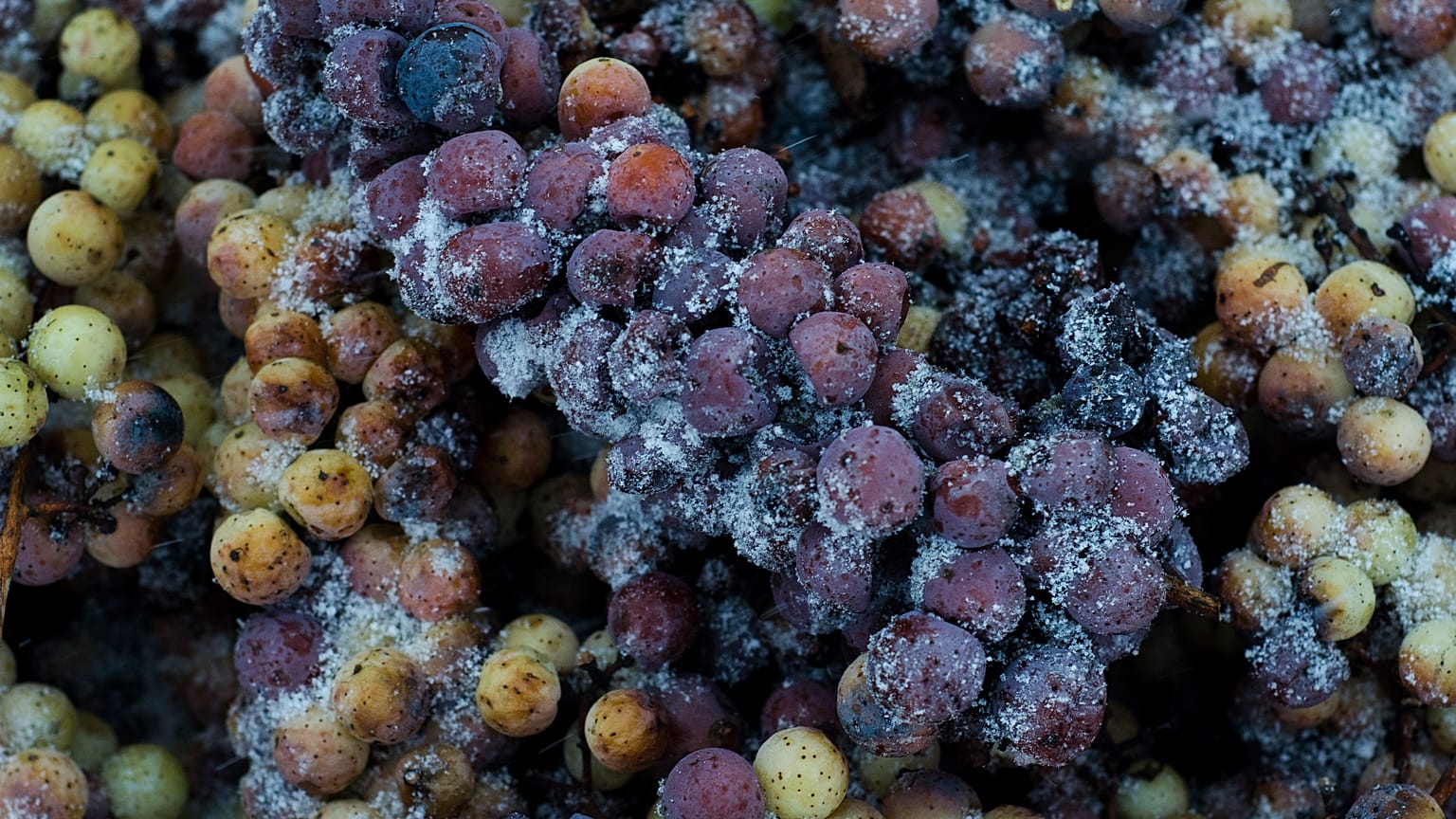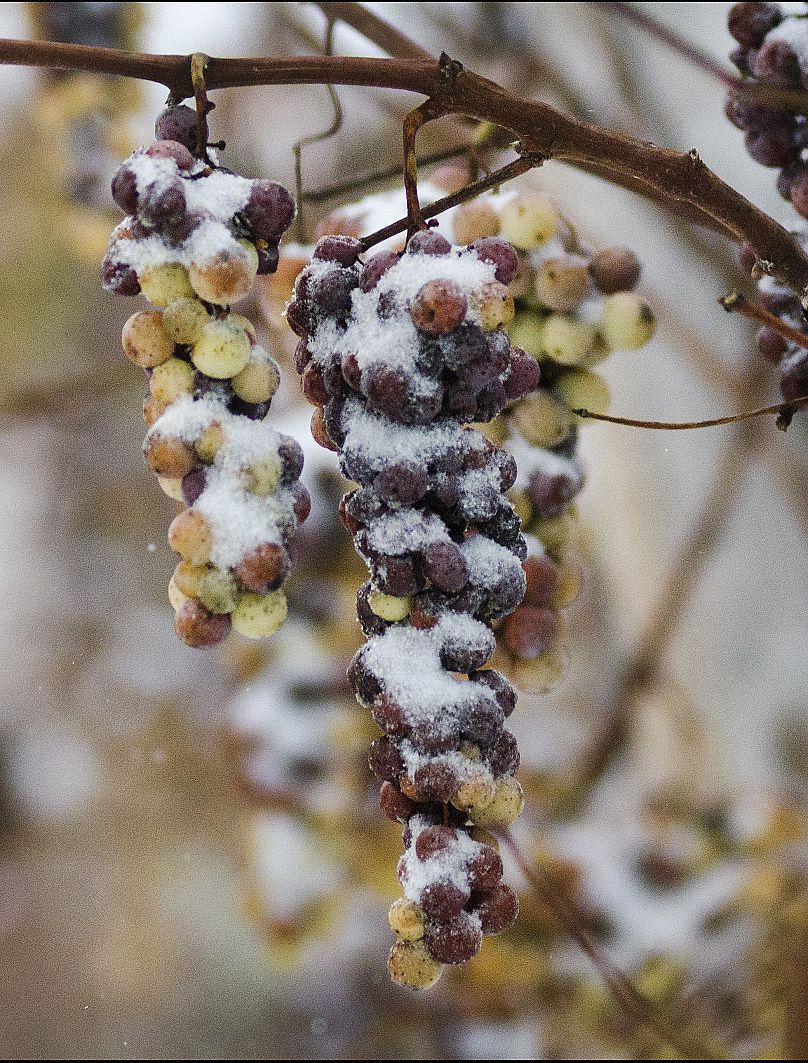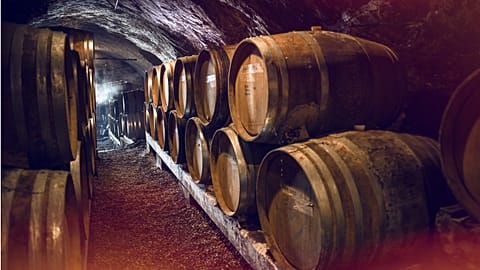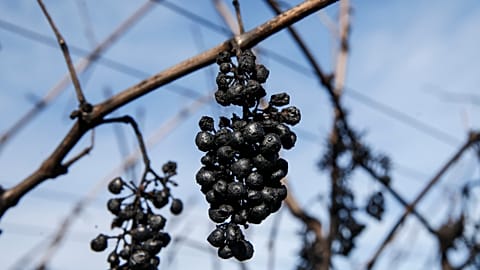December’s warmer than average temperatures pushed back the harvesting, but a cold spell in January 2022 has had the pickers out in numbers.
Months after the Northern Hemisphere's wine harvest, some vineyards -- particularly in the US, Canada and Germany -- are still full of fruit.
When perfectly healthy grapes are left on the vines as the year progresses and the temperatures drop, you're in ice wine territory.
How is ice wine made?
As the temperatures plummet below freezing, the water inside the body of the grape (the pulp) freezes too.
The grapes are picked and pressed just like a normal harvest, but once that's happened, the ice from the pulp stays in the press and the juice that is pressed out is much sweeter as the sugars have been concentrated.
Temperatures fluctuate between the end of summer and the depths of winter so grape pulp freezes and thaws again, often many times, before the frozen harvest in December or January. This dehydrates the grape leading to further sugar concentration.
You've gathered by now that ice wine is sweet! It's a dessert variety.
When sweet wine is made, the grapes need to be high in acid, which is the case with grapes grown in cooler climates. Chardonnay grapes from Chablis in the northern part of Burgundy for example are more acidic than those from the southern extremity of Macon.
This is the case with the classic ice wine (or Eiswein) grapes Vidal Blanc and Riesling.
Right now, in mid-January, while the vast majority of New Yorkers are hunkering down to ride out frigid temperatures and snow blasts from the latest winter storm, others are seizing on this harvest opportunity.
Temperatures between 12 and 18 degrees are the ideal conditions for harvesting grapes for ice wine.
“It’s cold, it’s often dark and it has to be done pretty quickly," Dave Breeden, winemaker at Sheldrake Point Winery on Cayuga Lake, told Syracuse.com. “Everyone pitches in, not just the vineyard people who are always out here, but tasting room staff, office people, the owners. We even have people who no longer work for us who come back and help out.”
December’s warmer than average temperatures pushed back the harvesting, but a cold spell this month has had the pickers out in numbers. About a dozen upstate wineries pick the frozen grapes, while others harvest grapes during warmer months then freeze them.
Due to the extra work that goes into harvesting these grapes, the price point is often a little higher than your common garden white wine.
But if you've never tried it, it's a real winter treat.



















